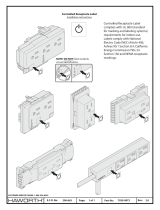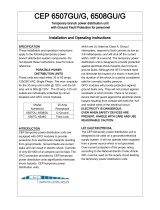
3
Introduction
NFPA 70®, also known as The National Electrical
Code® (herein after “NEC®”) and the contents of this
Pocket Guide are intended for qualified electrical
and low-voltage professionals with an existing
understanding of electrical theory, terminology and
safety practices. This includes electrical inspectors,
electrical contractors, electrical engineers and other
similarly qualified professionals. This Pocket Guide
is intended to be used with the National Electrical
Code and not as a replacement for it. Obtain the
2023 NEC® to ensure compliance.
Protected Content in this Pocket Guide.
All of the text and illustrations contained in this Pocket Guide are
protected by copyrights and licensing agreements and solely owned
by Grayboy Inc., the National Fire Protection Association® (NFPA®) and
Leviton Manufacturing Co., Inc. (“Leviton”). Use of any content within
this Pocket Guide is expressly prohibited for any reason including print
or electronic applications.
Source of the Expert Analysis and Illustrations used in this
Pocket Guide
The Expert Analysis found in this publication is copyrighted property of
Grayboy Inc. This Pocket Guide does not contain the complete Grayboy
analysis of the 2023 NEC® which can only be found in the full printed
Grayboy “Analysis of Changes” text book. Grayboy did not produce the
Leviton Pocket Guide and assumes no responsibility for the application
or use of any NEC® related material set out herein.
Use of NEC® Text
Material taken from the National Electrical Code® is reprinted with
permission from NFPA 70® - 2023 edition, National Electrical Code®,
Copyright 2022, National Fire Protection Association®, Quincy, MA.
All rights reserved. This material is not the complete and ocial position
of the NFPA on the reference subject, which is represented only by the
standard in its entirety a copy of which can be obtained through the
NFPA web site at www.nfpa.org.
National Electrical Code®, NEC® and NFPA 70® are registered trademarks of the
National Fire Protection Association®, 1 Batterymarch Park, Quincy, MA 02169
The National Fire Protection Association did not produce, review or approve this
book and assumes no responsibility for the application or use of any NEC® related
material set out herein.
Leviton, the Leviton logo, Decora®, Decora Smart™, SmartlockPro®, Wetguard®,
Opt-X®, e2HXD®, and Lightspace® are trademarks of Leviton Manufacturing Co., Inc.






















